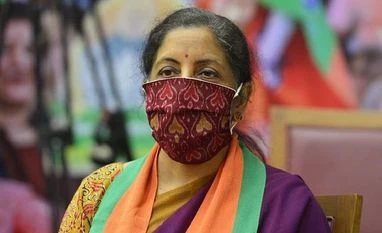With the world's worst pandemic outbreak scarring nascent economic recovery, the government may at the beginning of the unlock phase announce another stimulus package for the most hit sectors such as small business and self-employed, Bernstein said.
The brokerage in a note said its macro index suggests a deterioration in economic activity during April/May.
"Energy consumption has moderated, with power down over 4 per cent and oil consumption down over 16 per cent in May so far (all 2-year CAGR). E-waybills are down 16 per cent, suggesting the impact of scale down in factory production for some product categories, owing to the shut down in retail outlets.
This is limiting the ability to scale up production, even as supply chains are not as deeply impacted, as the most regional government have lower restrictions on factory operations," it said.
However, the initial strength in the summer crop sowing season (acreage up 21 per cent year-on-year) should limit inflationary risks and help support the rural economy.
"We believe that irrespective of the ability to spend, there will be another stimulus announced by the government when the unlock phase commences," Bernstein said, adding this is according to a usual script.
More From This Section
"We believe that the most impacted part of the economy remains the unorganised end markets (SMEs/Self-employed). While the impact on the lower middle class remains, this time we have argued that consumer sentiment in the upper-middle class could be weak and this aspect needs to be addressed," it said.
A stimulus, the brokerage said, in the form of loans and guarantees is required anyway, as downside support but the government needs to improve consumer sentiment.
"We wonder if there is any tool to manage that, as tax breaks or direct stimulus cheques for discretionary spends will be limited by budgetary constraints. Time is a healer for sentiment, though, and we think it will be the same this time as long as another wave doesn't emerge," it added.
While overall COVID cases have started to decline, key focus states witnessing a surge in cases have changed from north/western states earlier to the east/southern states now.
The second wave of COVID cases started to peak from the second week of May, as cases started to fall in the key 5 states. Daily COVID cases have halved from the peak of 4 lakh cases to 2 lakh cases daily.
The top 5 states (Maharashtra, Karnataka, Delhi, Chhattisgarh, and Uttar Pradesh) which account for 36 per cent of India's GDP, were witnessing an upsurge in cases in April. These states have started to see a reduction in cases and they now account for around 30 per cent of new cases reported (down from 70 per cent in April).
Apart from those 5 top states, other states which are witnessing an increase in cases are Tamil Nadu, Kerala, Odisha, West Bengal, and Andhra Pradesh - which now constitute 48 per cent of new cases reported (as of May 24). These 5 states collectively account for 25 per cent of India's GDP.
Of the 36 states and UTs in India, 31 are currently witnessing some form of lockdown, with the severity of lockdown depending on the COVID caseloads. Regional lockdowns that commenced from mid-April have continued until now with various state governments, extending it on a weekly or biweekly basis. Currently, lockdowns for most of the states have been extended till May-end/early June.
"Despite what we see in the economy, there is no element of shock this time. Macro is deteriorating but at a slower pace than seen in March-April last year, as economic activity has not fully stalled.
The risk is the persistence of the weakness for a bit longer, especially because even after the previous phase, the economy was continuing to see some impact even until a few months back," Bernstein said.
)